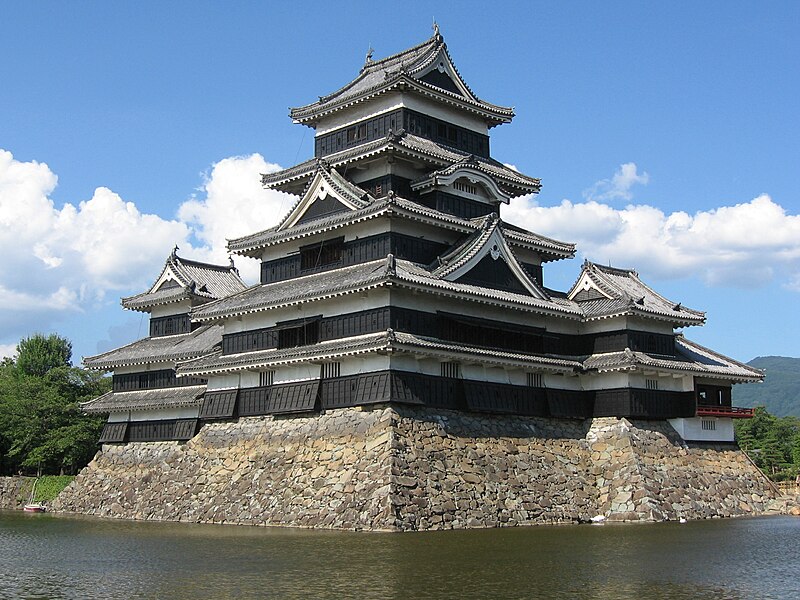Matsumoto Castle, also known as the "Crow Castle" because of its black exterior, is one of Japan's premier historic castles.It is located in the city of Matsumoto, in Nagano Prefecture and is within easy reach of Tokyo by road or rail.
The keep (tenshukaku), which was completed in the late 16th century, maintains its original wooden interiors and external stonework. It is listed as a National Treasure of Japan.
Type Hirashiro (flatland castle)
Built 1504
Built by Shimadachi Sadanaga
Construction materials Earth, stone, and wood
In use 1504 to 1868
Demolished The outer castle was taken down and the land reclaimed in the Meiji Restoration.
Current condition The original keep (tenshu) and inner walls survive. Several gates rebuilt since 1960.
The castle's origins go back to the Sengoku period. At that time Shimadachi Sadanaga of the Ogasawara clan built a fort on this site in 1504 which was originally called Fukashi Castle. In 1550 it came under the rule of the Takeda clan and then Tokugawa Ieyasu.
When Toyotomi Hideyoshi transferred Ieyasu to the Kantō region, he placed Ishikawa Norimasa in charge of Matsumoto. Norimasa and his son Yasunaga built the tower and other parts of the castle, including the three towers: the keep and the small tower in the northwest, both begun in 1590, and the Watari Tower; the residence; the drum gate; the black gate, the Tsukimi Yagura, the moat, the innermost bailey, the second bailey, the third bailey, and the sub-floors in the castle, much as they are today. They were also instrumental in laying out the castle town and its infrastructure. It is believed much of the castle was completed by 1593–94.
During the Edo period, the Tokugawa shogunate established the Matsumoto Domain, of which the Matsudaira, Mizuno and others were the daimyo.
All Reference to Wiki











